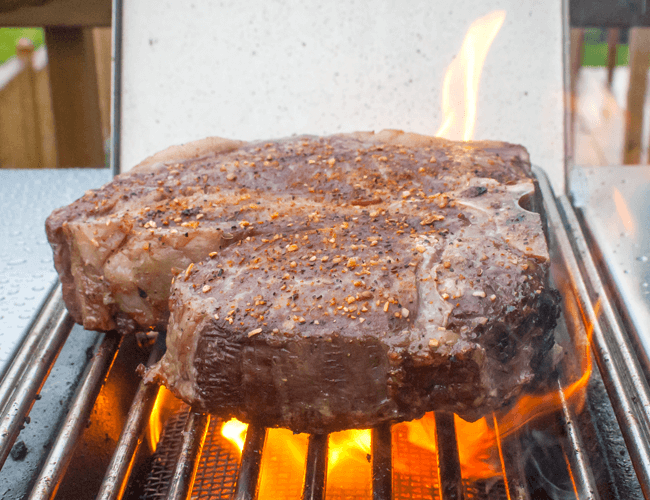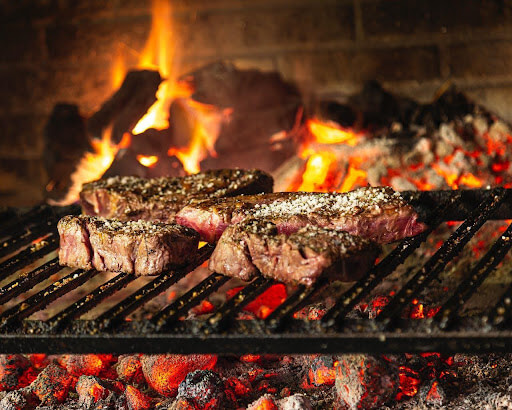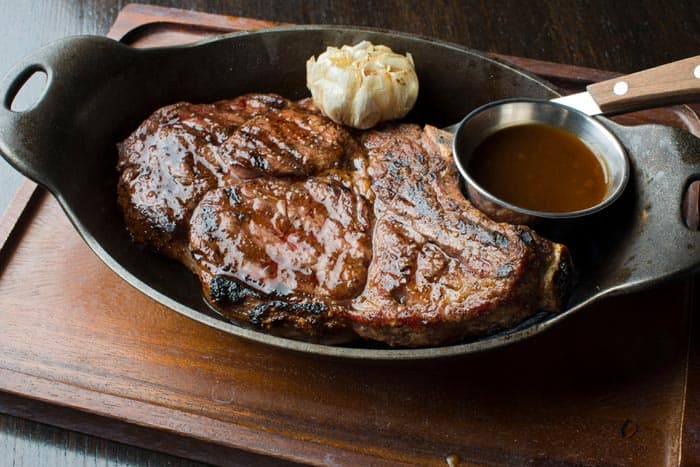The Maillard reaction is the foundation of the savory, complex flavors we crave in perfectly grilled meats and vegetables. This article delves into the science behind the Maillard reaction in grilling, offering insights on optimizing this reaction to enhance flavors and providing expert tips to elevate your grilling experience.
Understanding the Maillard Reaction
The Maillard reaction is a fascinating chemical process that occurs when proteins and sugars in food are exposed to high heat, typically above 300°F (150°C). This reaction creates the browned crust on grilled meats, the golden hue of toasted bread, and the aromatic appeal of roasted coffee. Unlike caramelization, which involves the breakdown of simple sugars, the Maillard reaction is a complex interaction between amino acids and reducing sugars, leading to hundreds of unique flavor compounds.
The result is a rich, savory flavor profile often described as umami or meaty, central to the appeal of grilled foods. This reaction primarily occurs on the food’s surface, where direct heat catalyzes the process, providing grilled dishes their characteristic color, aroma, and taste.
How the Maillard Reaction Enhances Grilled Foods
During grilling, the Maillard reaction transforms basic proteins and sugars into a range of new flavors. Meats, poultry, and even vegetables benefit from the Maillard reaction, developing a mouthwatering crust or char on the surface while retaining moisture. The intense heat of grilling creates an ideal environment for the Maillard reaction, resulting in a delectable contrast between the caramelized exterior and tender interior.
Key factors influencing the Maillard reaction in grilling include:
- Temperature: The Maillard reaction requires temperatures above 300°F (150°C) to initiate. For effective grilling, the food surface must be hot enough to promote browning, facilitated by direct contact with hot grill grates or radiant heat from coals or burners.
- Surface Dryness: Moisture inhibits browning because water evaporates at 212°F (100°C), preventing the food from reaching the Maillard threshold. Drying the surface of meats and vegetables enhances browning.
- Protein and Sugar Content: Foods rich in proteins and natural sugars, such as meats, seafood, and some vegetables (like onions and bell peppers), are ideal candidates for the Maillard reaction, as these components form the basis for complex flavor compounds.

Techniques to Maximize the Maillard Reaction on the Grill
Mastering the Maillard reaction on the grill involves adjusting the cooking process to optimize browning without overcooking. Here are some effective techniques:
Preheat the Grill Thoroughly
Preheating the grill is essential for reaching the high temperatures needed for the Maillard reaction. Whether using a charcoal or gas grill, allow time for the grates to become scorching hot. Direct contact with a hot surface accelerates the Maillard reaction, ensuring even cooking and rich browning.Dry the Surface Before Grilling
Ensure the food surface is dry by patting it down with paper towels. The drier the surface, the quicker it will achieve the Maillard reaction threshold, enhancing browning. Excess moisture will lead to steaming rather than searing, which impedes the Maillard reaction.Use Marinades Thoughtfully
While marinades add flavor, excess moisture can interfere with browning. Allow food to marinate, then pat it dry before grilling. Marinades with amino acids or sugars, like soy sauce or honey, promote browning, though sugary marinades may burn easily, so grill attentively.Avoid Overcrowding the Grill
Crowding leads to steaming, cooling the grill surface and preventing browning. Leave enough space between items on the grill to allow hot air to circulate freely, ensuring even cooking and effective browning.Sear First, Then Finish with Indirect Heat
For thicker cuts like steaks or pork chops, begin by searing at high heat to jump-start the Maillard reaction. Once browned, move the meat to a cooler area to finish cooking through indirect heat. This method locks in juices while developing robust flavors.Allow Meat to Rest After Grilling
Resting meat post-grill lets juices redistribute, enhancing flavor and texture. Although resting doesn’t impact the Maillard reaction, it ensures that the final bite is juicy, with a texture accentuated by the Maillard crust.
Enhancing the Maillard Reaction with Equipment and Tools
Achieving an ideal Maillard reaction also depends on quality grilling tools. High-quality grills that retain and distribute heat are key, as is using equipment like cast iron grates and thermometers.
Cast Iron Grates for Better Browning
Cast iron grates are superior for promoting browning due to their heat retention and distribution. Preheat them thoroughly for optimal results, as they help achieve a consistent sear and flavorful crust.Infrared Burners for Intense Searing
Infrared burners, available on some grills, produce radiant heat ideal for rapid searing. They help accelerate the Maillard reaction, especially for searing meats like steaks and chicken before finishing them with indirect heat.Thermometers for Temperature Control
An instant-read thermometer prevents overcooking while allowing enough time for browning. Monitoring internal temperatures is especially useful when grilling delicate foods, helping ensure the Maillard reaction without sacrificing texture.

Maillard Reaction vs. Caramelization: Key Differences
While the Maillard reaction and caramelization both involve browning, they develop distinct flavors. The Maillard reaction, a combination of amino acids and reducing sugars, yields savory and umami flavors, while caramelization results in sweet, nutty flavors. Caramelization requires higher temperatures and primarily affects foods high in sugar, such as onions and fruits.
This distinction is crucial for grilling, as foods undergoing the Maillard reaction provide a deeper, more complex flavor profile than those reliant solely on caramelization.

Conclusion: Elevate Your Grilling with the Maillard Reaction
Grilling is as much science as it is technique, and the Maillard reaction forms the foundation of the savory flavors in expertly grilled foods. By understanding the Maillard reaction and applying effective grilling techniques, you can enhance both taste and texture in your dishes. Focus on high heat, dry surfaces, and suitable tools to optimize browning and flavor. With these strategies, you'll achieve professional-level grilling results, delighting friends and family with each delicious bite.
